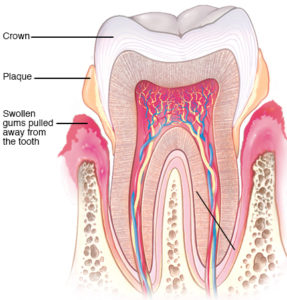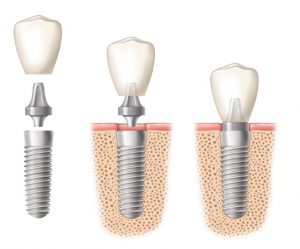Header logo
header top contact widget
Blog Archives
Recent Posts
Categories
Archives
- September 2024
- August 2024
- July 2024
- June 2024
- May 2024
- April 2024
- March 2024
- February 2024
- January 2024
- December 2023
- November 2023
- October 2023
- September 2023
- August 2023
- July 2023
- June 2023
- May 2023
- April 2023
- March 2023
- February 2023
- January 2023
- December 2022
- November 2022
- October 2022
- September 2022
- August 2022
- July 2022
- June 2022
- May 2022
- April 2022
- March 2022
- February 2022
- January 2022
- December 2021
- November 2021
- October 2021
- September 2021
- August 2021
- July 2021
- June 2021
- May 2021
- April 2021
- March 2021
- February 2021
- January 2021
- December 2020
- November 2020
- October 2020
- September 2020
- August 2020
- July 2020
- June 2020
- May 2020
- April 2020
- March 2020
- February 2020
- January 2020
- December 2019
- November 2019
- October 2019
- September 2019
- August 2019
- July 2019
- June 2019
- May 2019
- April 2019
- March 2019
- February 2019
- January 2019
- December 2018
- November 2018
- October 2018
- September 2018
- August 2018
- July 2018
- June 2018
- May 2018
- April 2018
- March 2018
- February 2018
- January 2018
- December 2017
- November 2017
- October 2017
- September 2017
- August 2017
- July 2017
- June 2017
- May 2017
- April 2017
- March 2017
- February 2017
- January 2017
- December 2016
- November 2016
- October 2016
- September 2016
- August 2016
- July 2016
- June 2016
- May 2016
- April 2016
- March 2016
- February 2016
- January 2016
- December 2015
- November 2015
- October 2015
- September 2015
- August 2015
- July 2015
- June 2015
- May 2015
- April 2015
- March 2015
- February 2015
- January 2015
- December 2014
- November 2014
- October 2014
- September 2014
- August 2014
- July 2014
- June 2014
- May 2014
- April 2014
- March 2014
- February 2014
- January 2014
- December 2013
- November 2013
- October 2013
- September 2013
- August 2013
- July 2013
- June 2013
- May 2013
- April 2013
- March 2013
- February 2013
- January 2013
- December 2012
- November 2012
- October 2012
- September 2012
- August 2012
- July 2012
- June 2012
How To Avoid Gum Disease & Cavities From Sugar This Holiday
Posted on Nov 12, 2020 by William J. Claiborne, DDS MS
Regardless of size and distancing limitations on 2020 holiday gatherings, you can bet that Americans will still consume the yummy indulgences associated with the season. After all, we all need comfort food these days. The holidays simply give us “justification” for eating the sugary, rich treats we’ve waited all year to enjoy. We release the guilt and know we’ll pay for it through our new year’s resolutions.
I’m the last person on earth who would preach abstinence when it comes to things like thick egg nog, sugar cookies and pecan pie. Like you, I wait all year to savor things like this. However, I’m also a periodontist and have a unique look at what this added sugar can do to teeth and gums.
Keep in mind that all food (as well as beverages other than plain water) cause an acidic surge into the mouth. This is sent in via saliva and is the first stage of the digestive process. This acid is so strong it can actually soften tooth enamel for 20-30 minutes, leaving you with a higher risk for tooth decay.
Sugar also super-charges oral bacteria, which are living, eating and breeding organisms. They thrive in colonies as they subsist on gum tissues. As bacteria levels grow, the gums become inflamed. This is the first stage of periodontal (gum) disease.
As gum disease worsens, the inflammation caused by these bacteria can lead to persistent bad breath, receded gums that expose sensitive tooth roots, and gums that darken in color. If untreated, pus pockets can eventually form at the base of some teeth and attack the tooth supporting structures beneath the gums.
Eventually, teeth will loosen and can require removal. Also known as periodontal disease, this is the nation’s leading cause of adult tooth loss.
Even without the holidays, Americans are the biggest sugar consumers on earth. Although the World Health Organization (WHO) recommends no more than 5% of daily sugar intake, or less than 25 grams, Americans consume 82 grams each day, on average. That translates into over 19 teaspoons of sugar per day and 66 pounds each year, per person.
When researchers from the University College London & London School of Hygiene studied public health records from around the world, they found that 92% of American adults have cavities. Compare this to Nigeria, a country with a diet very low in sugar, where only 2% of the population have had tooth decay. Also concerning were their findings that nearly 90% of America’s school age children have experienced tooth decay.
Childhood obesity is also out of control. The Centers For Disease Control & Prevention (CDC) reports that the U.S. percentage of children with obesity “has more than tripled since the 1970s. Today, about one in five school-aged children (ages 6–19) has obesity.” That’s nearly one-third of children who are overweight or obese. https://www.cdc.gov/healthyschools/obesity/facts.htm Obesity is when fat content of the body is over thirty percent of its overall mass.
According to the Centers For Disease Control & Prevention (CDC), adults in the U.S. who are categorized as obese is at nearly 40 percent. Another 30 percent are categorized at overweight.
While sugar is not the only culprit, Americans have been lured into a lifestyle surrounded by sugary snacks and beverages. (After all, ads tell us that we need to grab a Snickers bar, not an apple, as an afternoon pick-me-up.)
You may be surprised to know that studies show that sugar is even addictive. It activates the same regions in the brain that react to cocaine. (https://www.brainmdhealth.com/blog/what-do-sugar-and-cocaine-have-in-common/)
How does this apply to your smile? Research has shown that obese adults have a 6 times higher potential to develop periodontal (gum) disease. As a periodontal specialist, my goal is always to help patients achieve optimal oral health. In our Asheville periodontal dental office, we address the risks of periodontal disease with our patients without judgement of their weight, but rather how we can help them enjoy a healthier smile.
As difficult as losing weight can be, it is important to be aware of risk factors that can make you more susceptible to gum disease. Initial symptoms include gums that are tender, swollen, and may bleed when brushing. This stage, known as gingivitis, is actually reversible with prompt, thorough oral hygiene.
This holiday, try to reduce your intake of sugar and carbohydrates. This will help to lower your potential for damage by oral bacteria, reducing your risk for cavities and gum disease. Additionally, be committed to a thorough at-home routine of daily flossing, twice a day brushing and drinking plenty of water.
If you are experiencing symptoms of gum disease, however, it is important to be seen by a periodontist as soon as possible to halt further progression. A periodontist is a dental specialist who has advanced training in treating all stages of gum disease as well as in the placement of dental implants. The earlier the treatment, the less involved treatment requirements will be. Gum disease will not improve without professional care.
Call 828-274-9440 to schedule an initial examination or begin with a consultation.
Understanding Dental Implants & Their Benefits
Posted on Nov 03, 2020 by William J. Claiborne, DDS MS
When you lose a natural tooth, even one that isn’t visible when you smile, its absence causes a reaction that takes place below the gum line. Many people are unaware of what occurs – at first. When it becomes obvious, it leads to problems that are not only bothersome, they are detrimental to your overall health.
The absence of a tooth root in the upper or lower jaw bone is a loss of stimulation the bone mass where it was once positioned. These roots provide stimulation and nourishment that enables the bone to maintain a healthy mass. Without the presence of tooth roots, the bone begins to “melt away.” The term for this process is known as resorption.
Resorption begins shortly after the tooth root is removed. Once it begins, it continues at an ever-increasing pace. For example, the first year after a tooth root is missing, the loss of bone may be minimal. With each passing year, the rate of loss accelerates.
As the bone shrinks in height, the natural tooth roots adjacent to the area of missing teeth are vulnerable to movement and root damage. On average, the teeth most likely to be lost are the ones next to areas of tooth loss.
For the support of remaining natural teeth, it’s important to replace missing teeth as soon as possible so adjacent teeth can retain their proper positions. It is even more important to replace missing teeth before bone loss begins. And, it’s HOW you replace them that’s most important.
Because dental implants replace the tooth above the gum line AND the root portion below it, the bone is able to retain its mass. Dental implants are designed to restore the look, feel and chewing stability like that of natural teeth.
As the advantages of dental implants become more familiar for natural tooth replacement, there are still some misconceptions among the general population. The following will hopefully clear up some of the confusion.
First, Dental Implants are a term that describes 3 components. The “implanted” portion is placed in your jaw bone where a tooth root was once held. The “implant” is not what holds the tooth. It serves to anchor an attached tooth (or bridge of two or more teeth).
Made from titanium, this metal bonds to living bone successfully. As a matter of fact, dental implants have one of the highest success rates of any implant-in-bone procedures.
The implanted portion becomes anchored in the jaw bone through a process known as ‘osseo-integration.’ Once the implant has been secured by the bone, a post is inserted into the center of the implant. This post is known as an abutment.
The replacement tooth (or teeth) is usually made of porcelain. This is the portion that you see and looks just like a natural tooth. This is known as a restoration or crown. It is attached securely to this post.
 Porcelain is commonly used to create the restorations because they provide the most durable material possible and have the look and feel of a natural tooth. Porcelain has a luminosity of natural teeth and even reflects light as a natural tooth would. Porcelain is also very resistant to staining.
Porcelain is commonly used to create the restorations because they provide the most durable material possible and have the look and feel of a natural tooth. Porcelain has a luminosity of natural teeth and even reflects light as a natural tooth would. Porcelain is also very resistant to staining.
When missing more than one tooth in one area, an implant is not always necessary to replace each one. As mentioned prior, one implant can often hold two or a bridge of teeth. Several strategically-placed implants may also be used support a full arch of teeth.
When people can chew properly and eat a healthy diet, their overall health is better. And, without the fear of embarrassing slips or clicks (often associated with denture wear), being socially active can continue to be a positive part of a happy life.
Dental implants restore the ability to eat with stability, chew comfortably, laugh and speak with confidence. Dental implants do not decay and will never need root canals. And, with proper care, they’ll last your lifetime.
There are many types of implants, each designed to accommodate specific needs. Many dental implants are chosen and placed by a Periodontist. This is a dental specialist who has extensive and specialized training in the diagnosis and placement of all types of dental implants. He or she can select the one that will work best for you.
Proper placement and support in caring for implants is an important part of a successful outcome. Dental Implants CAN fail. This is why a periodontal specialist can be an asset to your investment.
If infection sets in and reaches the implanted portion, the implant may need to be removed so treatment can resolve the problem. Your periodontist can assess gum health prior to placement and monitor your healing process to help minimize this risk.
There are other threats to dental implant success. Clenching or grinding teeth can also contribute to implant failure. Smoking complicates and delays the healing process and is also a known contributor to implant failure. Again, a periodontist can oversee your care to optimize your ability to enjoy a lifetime of confident smiles.
Call 828-274-9440 to arrange a consultation. During this time, we can discuss treatment that can achieve your needs and goals as well as the process and anticipated costs. If dental fear is a concern, I’ll also explain sedation options. We offer both oral sedation and IV sedation, if a “twilight sleep” state is preferred. Here, you’ll find your comfort is always a priority.


